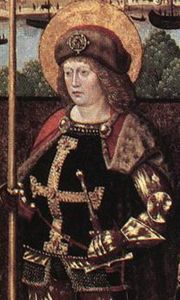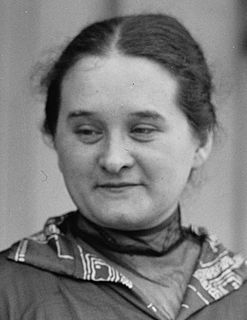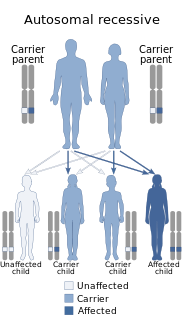Related Research Articles

Cologne is the largest city of Germany's most populous federal state of North Rhine-Westphalia and the fourth-most populous city in Germany. With slightly over a million inhabitants within its city boundaries, Cologne is the largest city on the Rhine and also the most populous city both of the Rhine-Ruhr Metropolitan Region, which is Germany's largest and one of Europe's major metropolitan areas, and of the Rhineland. Centered on the left bank of the Rhine, Cologne is about 45 kilometres (28 mi) southeast of North Rhine-Westphalia's capital of Düsseldorf and 25 kilometres (16 mi) northwest of Bonn. It is the largest city in the Central Franconian and Ripuarian dialect areas.

Cologne Cathedral is a Catholic cathedral in Cologne, North Rhine-Westphalia, Germany. It is the seat of the Archbishop of Cologne and of the administration of the Archdiocese of Cologne. It is a renowned monument of German Catholicism and Gothic architecture and was declared a World Heritage Site in 1996. It is Germany's most visited landmark, attracting an average of 20,000 people a day. At 157 m (515 ft), the cathedral is currently the tallest twin-spired church in the world, the second tallest church in Europe after Ulm Minster, and the third tallest church in the world. It is the largest Gothic church in Northern Europe and has the second-tallest spires. The towers for its two huge spires give the cathedral the largest façade of any church in the world. The choir has the largest height to width ratio, 3.6:1, of any medieval church.

A candy cane is a cane-shaped stick candy often associated with Christmastide, as well as Saint Nicholas Day. It is traditionally white with red stripes and flavored with peppermint, but they also come in a variety of other flavors and colors.
Saint Ursula is a legendary Romano-British Christian saint, died on October 21, 383. Her feast day in the pre-1970 General Roman Calendar is October 21. There is little definite information about her and the anonymous group of holy virgins who accompanied her and on some uncertain date were killed at Cologne. They remain in the Roman Martyrology, although their commemoration does not appear in the simplified Calendarium Romanum Generale of the 1970 Missale Romanum.

Andrei Rublev ; Born in the 1360s, he died between 1427 and 1430 in Moscow and is considered to be one of the greatest medieval Russian painters of Orthodox icons and frescos.

The Frankfurter Rundschau (FR) is a German daily newspaper, based in Frankfurt am Main. It is published every day but Sunday as a city, two regional and one nationwide issues and offers an online edition as well as an e-paper. Local major competitors are the conservative-liberal Frankfurter Allgemeine Zeitung (FAZ), the local edition of the conservative tabloid Bild-Zeitung, the best-selling newspaper in Europe, and the smaller local conservative Frankfurter Neue Presse. The Rundschau's layout is modern and its editorial stance is social liberal. It holds that "independence, social justice and fairness" underlie its journalism.

Bruno the Great was Archbishop of Cologne from 953 until his death and Duke of Lotharingia after 954. He was the brother of Otto I, Holy Roman Emperor.

Andernach is a town in the district of Mayen-Koblenz, in Rhineland-Palatinate, Germany, of currently about 30,000 inhabitants. It is situated towards the end of the Neuwied basin on the left bank of the Rhine between the former tiny fishing village of Fornich in the north and the mouth of the small river Nette in the southeast, just 13 miles (21 km) north of Koblenz, with its five external town districts: Kell, Miesenheim, Eich, Namedy, and Bad Tönisstein. A few hundred metres downstream of Andernach the Rhine valley narrows from both sides forming the northern part of the romantic Middle Rhine stretch. Already in Roman times the place the narrow passage begins was named "Porta Antunnacensis" or Andernachian Gate. It is formed by two hills, the Krahnenberg and the Engwetter on the right bank near the wine village Leutesdorf. The crane hill is named after the old crane beneath his foot ; in earlier times the hill was named "Geiersberg".

Count Engelbert II of Berg, also known as Saint Engelbert, Engelbert of Cologne, Engelbert I, Archbishop of Cologne or Engelbert I of Berg, Archbishop of Cologne was archbishop of Cologne and a saint; he was notoriously murdered by a member of his own family.

Pishiobury, sometimes spelled Pishobury, was a manor and estate in medieval Sawbridgeworth, Hertfordshire. Its denomination as "Pishiobury" only emerged in the mid to late 19th century.

Saint Gereon of Cologne, who may have been a soldier, was martyred at Cologne by beheading, probably in the early 4th century.
Gerold of Vinzgau was a count in Kraichgau and Anglachgau. His daughter married King Charlemagne in 771. In 784 generous donations to the monastery of Lorsch by Gerold and Emma are recorded.

Christine Teusch was a German politician of the Zentrumspartei and the Christian Democratic Union, and Minister of Culture in Nordrhein-Westfalen.
Gerold may refer to:

The Church of Saint Pantaleon is an early Romanesque church in Cologne, Germany. The church dates back to the 10th century and is one the twelve Romanesque churches of Cologne. The former monastery church is consecrated to Saint Pantaleon and the Saints Cosmas and Damian and is the oldest church of the cult of Saint Pantaleon west of Byzantium. The empress Theophanu and the archbishop Bruno the Great are buried in the church, which also contains shrines of saints Alban, the first Christian martyr of Britain, and Maurinus of Cologne. Pope Benedict XVI visited the church in 2005.

Baller–Gerold syndrome (BGS) is a rare genetic syndrome that involves premature fusion of the skull bones and malformations of facial, forearm and hand bones. The symptoms of Baller–Gerold syndrome overlap with features of a few other genetics disorders: Rothmund–Thomson syndrome and RAPADILINO syndrome. The prevalence of BGS is unknown, as there have only been a few reported cases, but it is estimated to be less than 1 in a million. The name of the syndrome comes from the researchers Baller and Gerold who discovered the first three cases.

Gerold Späth is a Swiss author, poet and writer.
The Testament of Charlemagne was documented and witnessed in 811, the 43rd year of his reign. Charlemagne had intended to make a last will and testament in order to share his wealth with his daughters and the children of his concubines. Unfortunately, it was begun too late and was not finished before his death in 814. Nevertheless, three years prior, he made a division of his possessions, ratified in the presence of the faithful who were called upon as witnesses. The text of this testament is quoted from Einhard and can be found in the Internet History Sourcebooks.

Gerold Otten is a retired German Air Force Oberst (Colonel) and politician (AfD). Since 24 October 2017 he has served as member of the Bundestag.
Ulrike Sonntag is a German operatic soprano and academic voice teacher at the Staatliche Hochschule für Musik und Darstellende Kunst Stuttgart. She was previously a member of the Staatstheater Stuttgart, Vienna State Opera, and other ensembles, and has performed in operas and concerts, and taught masterclasses, in several countries. Among her recordings are rarely performed oratorios by Fanny Hensel and Paul Hindemith.
References
- ↑ Saint Gerold of Cologne Patron Saint Index
| This article about a saint is a stub. You can help Wikipedia by expanding it. |
| This German biographical article is a stub. You can help Wikipedia by expanding it. |